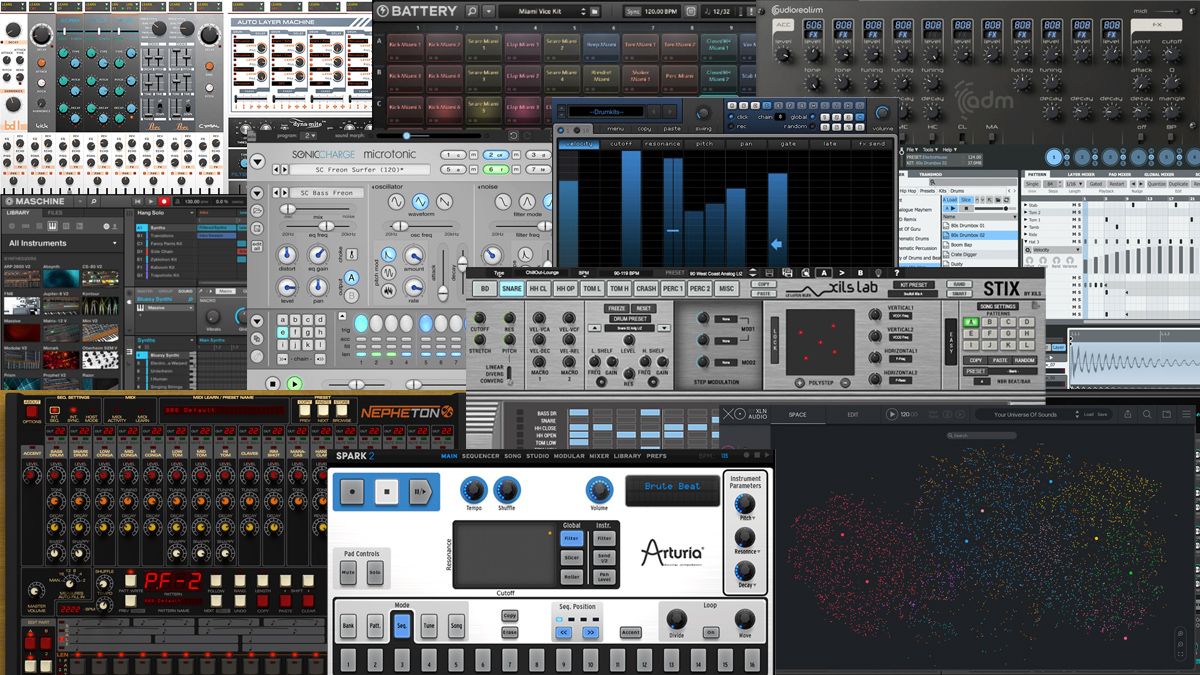For expansions, open MPC Expansions. For the VST/AU plugins open the respective VST/AU folder. Choose the plugin/expansion that you want to use by double clicking it. This will load this. For expansions, open MPC Expansions. For the VST/AU plugins open the respective VST/AU folder. Choose the plugin/expansion that you want to use by double clicking it. This will load this plugin/expansion into the selected track. Open up your expansions menu in the MPC browser, open the essential instruments expansion pack and look for a keygroup called 'Rhodes' (cant recall the exact name). Nonetheless, you can use the VST in controller mode while hooked up to your computer inside the MPC software, as you would in any DAW.
vMPC2000XL is an open-source emulation (unofficial) of the Akai MPC2000XL MIDI Production Center hardware sampler. The software is available as a standalone application, as well as a VST/VST3/AU plugin for your DAW on Windows, macOS, and Linux (support for Linux is experimental).
The original Akai MPC2000XL is a more technologically advanced take on the classic MPC60 sampler. Manufactured in the early 2000s, it provided the same intuitive Akai MPC workflow while offering more RAM memory, higher polyphony, and other hardware improvements. It did, however, retain the legendary groove and “feel” of the old-school MPC samplers.
How To Use Vst Plugins In Pro Tools
The free vMPC2000XL plugin is a close emulation of the Akai MPC2000XL sampler. The software doesn’t emulate the signal path of the original hardware, so it doesn’t color the sound per se. However, it simulates the MPC’s digital voice filter. According to the info provided by the developer, this aspect of the emulation was “tweaked by ear” to resemble the hardware as closely as possible. On the other hand, the internal circuits are not emulated, so the samples won’t sound different simply because you’re playing them via this plugin. You might want to look into something like the SPre plugin for achieving that kind of effect. Where do i install vst plugins for mpc essentials.
More importantly, though, vMPC2000XL closely recreates the workflow of the Akai MPC2000XL hardware. Every menu screen and software feature is modeled after the original instrument. As a result, you’re getting an authentic Akai MPC2000XL experience in software format. The vMPC2000XL interface is certainly not the most intuitive in this age of virtual instruments and VST plugins. That said, it is a great way to experience the classic MPC beat-making workflow.
vMPC2000XL can be downloaded completely free of charge from the project page. The source code is also available. To use the plugin version of the instrument, the standalone application must be installed first (comes in a separate installer).
More info:vMPC2000XL(28.6 MB download size, EXE installer, 32-bit & 64-bit VST/VST3/AU plugin format for Windows, macOS, Linux)
VST stands for Virtual Studio Technology. There are three types of VST plug-ins:

- VST instruments: These plug-ins generate audio and are either virtual synthesizers or samplers. Many VST instruments emulate the appearance and sound of famous hardware synthesizers. Popular VSP instruments include Massive, FM8, Absynth, Sylenth 1, Reaktor, Gladiator, Vanguard, and Omnisphere.
- VST effects: Effects process audio instead of generating it. VST effects function like hardware audio processors, like reverbs and phasers.
- VST MIDI effects:MIDI plug-ins process MIDI messages and send MIDI data to other VST instruments and hardware.

VST Plug-ins
VST plug-ins can be used within a digital audio workstation, in programs like Pro Tools and Logic. They’re frequently used to emulate hardware outboard gear such as compressors, expanders, equalizers, and maximizers. You'll frequently find these distributed to emulate certain models of hardware; there's some for vintage compressors, and you'll frequently find effects that emulate vintage hardware (both in instrumental and stompbox-like effects).
Think of VST plug-ins as really affordable ways to make your home studio sound like a really expensive commercial operation.
VSTi Plug-ins
Aside from VST plug-ins, you'll also find VST-instrument or VSTi plug-ins. These can emulate really cool, but expensive, hardware (like Hammond B3 and Nord Electro). https://builderskyey.weebly.com/blog/time-date-stamp-video-software-mac. The quality of these VSTi plug-ins can vary from acceptable to really poor; it all depends on the quality of your system resources (RAM and scratch space on your hard drive, for example), and how well-sampled the instrument is. You also want to make sure that your VSTi plug-in offers true polyphonic content, meaning you can make life-like chords that don’t sound too artificial. K meter vst free.
Quality
There are thousands of plug-ins available. Some only take a few hours to produce and are free, but the quality is terrible. Some are made by huge companies and sound amazing, but are expensive. VST plug-in developers try to recreate the sound as closely as possible, but the original instrument is probably always going to sound better than the plug-in. You might be trying to get the rich, full-bodied sound of an organ, for example, but who owns an organ? No one has access to every type of instrument, so a plug-in will have to do. The good news is that VST plug-in technology is improving, so quality can only get better with time.
VST Plug-in Standard
Created by Steinberg, a German musical software and equipment company, the VST plug-in standard is the audio plug-in standard that allows third-party developers to make VST plug-ins. Users can download VST plug-ins on Mac OS X, Windows, and Linux. The vast majority of VST plug-ins are available on Windows. Apple’s Audio Units are standard on Mac OS X (it’s actually considered a competing technology), and Linux lacks commercial popularity, therefore few developers create VST plug-ins for the operating system.
How To Use Vsts
Where to Find VST Plug-ins
Akai Mpc Studio Vst Plugins
There are thousands of VST plug-ins available, both commercially and as freeware. The Internet is flooded with free VST plug-ins. Home Music Production and Bedroom Producers Blog have robust lists of VST plug-in recommendations, and Splice and Plugin Boutique also offer a ton of free plug-ins.